Drone Laws in Minnesota

Paying attention to everything the FAA has put forth since their drone laws and regulations were initially put into full effect is crucial for all drone fliers. Although, do you know the drone laws in Minnesota, as well?
Learn All The Drone Rules & Regulations
This article will give a brief overview of the laws in your state, but we can’t keep cover all the minutae in only two thousand words. That’s why we highly recommend that you do some research on your own time and, ideally, enroll in a professional course if you’re actually looking to get certified. Though there’s lots of options for learning more about drone laws, we highly recommend the#1 Rated Professional Course: Drone Pilot Ground School. Get $50 Off as a Dronethusiast reader, just click the link and sign up. It’s a great way to learn about drone laws and piloting that’s cheaper than most of its competition, you can purchase it once and own it forever and they’re constantly updating their professional training.
What Drone Laws to Consider When Flying Over Minnesota?
Unfortunately for us, Minnesota doesn’t have any clear areas where you get the green light to fly in. With this in mind, we strongly recommend that you visit the Minnesota Department of Transportation’s website before you take your drone out. They have quite a bit of information that you’ll no doubt find useful and necessary.

The Registering Process in Minnesota
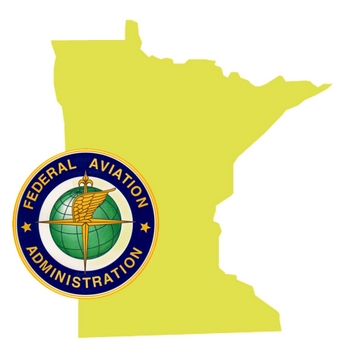
The Federal Aviation Administration (FAA) requires that all Small Unmanned Aircraft Systems (UAS) owners follow strict regulations and laws. You will need to file your name, home address and your email address as a start.
From there, you will receive a Certificate of Aircraft Registration and Proof of Ownership. These will include an identification number for your aircraft. You must have this number displayed on your drone at all times. The number will be valid for up to 3 years.
All aircraft that weighs more than 0.55 pounds, or 250 grams, and less than 55 pounds, or 25 kilograms, must be registered. This also includes any added payloads, such as an onboard camera.
You must be at least 13-years-old in order to register and, effective December 21st, 2015, all newly purchased or made drones must be registered before their first flight. You are able to register through a paper-based process, but you can also do so online by clicking here.
Proximity to Airports in Minnesota
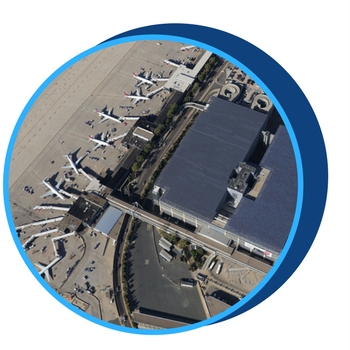
As a general rule of thumb, and in accordance with the law from the FAA, you may not fly within a 5-mile radius of any airport. In 2012 the FAA enacted the Modernization and Reauthorization Act which requires hobbyist drone operators, meaning residential, to contact air traffic control and/or airport management if they are operating within a 5-mile radius of any local airport.
This is enacted nationwide, not only in Minnesota, under Part 101 of the Act, being Special Rule for Model Aircraft, to ensure that drone operations under unsafe conditions are disapproved before the drone can be launched.
Regardless of the local airport you will be flying near, and possibly breaching airspace, you will need to contact either the airport air traffic control tower or the airport operator.
You will need to establish an agreed-upon operating procedure with airport air traffic or the airport operator and answer a couple of questions. For example, questions relating to how long you are going to be flying for.
Are There Unique Drone Laws in Minnesota?
At this time of writing, all of the legal information listed below is deemed as accurate as possible and fully in effect.
Superior National Forest and Boundary Water Canoe Area Wilderness – Executive Order 10092
Because of Minnesota’s Executive Order 10092, the use of drones within a range of 4,000 above the Boundary Water Canoe Area Wilderness is not permitted unless the Forest Service from Superior National Forest authorizes the flight.
However, this is usually only the case for search and rescues. Anyone wanting to fly for a commercial purpose must request and obtain a permit given by the Forest Service through their local Forest office.
Drone Ban in St. Bonifacius
The city of St. Bonifacius has placed a strict ban on drones where public city airspace is concerned. Drones are no longer allowed to fly anywhere within the city limits, both in air and on land.
Minnesota Department of Transportation – Registration Requirement
Any commercial drone users within the state of Minnesota looking to fly, for whatever reason, must register with the Minnesota Department of Transportation as confirmed below:
“All UAS registered with the FAA in this manner and owned by a Minnesota resident must register with MnDOT and pay an annual registration fee in Minnesota. Non-residents using UAS for commercial operations in Minnesota must also register their UAS before the aircraft is used for commercial purposes. To complete registration of the aircraft, the owner is required to show proof that sales tax has been paid and provide insurance information. The insurance must comply with the requirements of Minnesota Statute 360.59, Subd. 10. On the Minnesota registration form, use the same registration number that was provided by the FAA that starts with “N-“.”
HF3919 – Drone Regulations
Sec. 14. Minnesota Statutes 2017, section 360.013, is amended by adding a subdivision to read:
Subd. 62. Unmanned aircraft system. “Unmanned aircraft system” means an unmanned powered aircraft that does not carry a human operator can be autonomous or remotely piloted or operated and can be expendable or recoverable. Unmanned aircraft system does not include a satellite orbiting the earth.
Sec. 16. Minnesota Statues 2014, section 360.075, is amended by adding a subdivision to read:
Subd. 8. Unmanned aircraft system operations. Every person who:
Operates an unmanned aircraft system either on or over land or water in this state without the consent of the owner of such aircraft;
Knowingly operates an unmanned aircraft system with a certificate of registration issues by the commissioner of transportation that is canceled, revoked, suspended, or altered;
Operates any unmanned aircraft system in such a manner as to indicate either a willful or a wanton disregard for the safety of persons or property;
Carries on or over land or water in this state in an aircraft other than a public aircraft any explosive substance except as permitted by United States Code title 18. chapter 40 and Code of Federal Regulations, title 27, part 555;
Launches or recovers an unmanned aircraft system from state or private property without consent; or
Interferes with manned aircraft by willfully damaging, disrupting the operations of, or otherwise interfering with a manned aircraft while taking off, landing, in flight, or otherwise in motion through the use of an unmanned aircraft system except as may be permitted by other laws of this state is guilty of a misdemeanor.
EFFECTIVE DATE. This section is effective January 1. 2017 and applies to offenses committed on or after that date.
Sec. 17. Minnesota Statutes 2014, section 360.075, is amended by adding a subdivision to read:
Subd. 9. Gross misdemeanor. Every person who commits any of the acts specified in subdivision 8 for a second of subsequent time is guilty of a gross misdemeanor.
EFFECTIVE DATE. This section is effective January 1, 2017 and applies to offenses committed on or after that date.
Sec. 18. Minnesota Statutes 2014, section 360.075, is amended by adding a subdivision to read:
Subd. 10. Careless of reckless operation. Every person who operates an unmanned aircraft system in the air of on the ground or water in a careless or reckless manner so as to endanger the life or property of another is guilty of a misdemeanor.
EFFECTIVE DATE. This section is effective January 1, 2017 and applies to offenses committed on or after that date.
Sec. 19. Minnesota Statues 2014, section 360.55, is amended by adding a subdivision to read:
Subd. 9. Unmanned aircraft system. (a) An unmanned aircraft system operated for commercial purposes must be registered for an annual fee of $25 and provide proof of a sales tax payment. An unmanned aircraft system registered under this paragraph is not subject to the taxes and fees provided in sections 360.511 to 360.67
(b) An unmanned aircraft system operated for private, noncommercial purposes is not subject to registration and fee requirements under this subdivision or to taxes and fees under sections 360.511 to 360.67.
(c) An unmanned aircraft system owned and operated by a government entity must be registered for an annual fee of $25 and provide proof of a sales tax payment. An unmanned aircraft system registered under this paragraph is not subject to the taxes and fees provided in sections 360.511 to 360.67.
EFFECTIVE DATE. This section is effective January 1, 2017.
Sec. 20. [360.591] UNMANNED AIRCRAFT SYSTEM; COMMERCIAL USE PERMIT.
Subdivision 1. Permit required. A person is prohibited from operating an unmanned aircraft system for a commercial purpose in this state unless the person possesses a valid commercial operator permit issued by the Department of Transportation for the unmanned aircraft system being operated. An operator must apply for the permit from the department in the manner provided by the department.
Subd. 2. Permit requirements; eligibility. In order to be eligible for a commercial operator permit under this section a person must:
Be at least 17 years of age;
Possess a valid driver’s license;
Pass a knowledge test for operating an unmanned aircraft system;
Register and pay the fee under section 360.55 subdivision 9 paragraph (a); and
Satisfy all other applicable state or federal regulations
Subd. 4. Unlawful commercial operations. A person who operates an unmanned aircraft system for commercial purposes in violation of this section is guilty of a misdemeanor.
Subd. 5. Liability insurance required. In order to operate an unmanned aircraft system for commercial purposes in Minnesota, a person must carry liability insurance protecting third parties for both personal injury and property damage.
Other Legal Issues With Drones in Minnesota
At this time of writing, there are currently a number of bills in circulation within the state of Minnesota surrounding drones.
HR 1138 – Wildfire Airspace Protection Act of 2017
Be it enacted by the Senate and House of Representatives of the United States of America in Congress assembled,
SECTION 1. SHORT TITLE.
This Act may be cited as the “Wildfire Airspace Protection Act of 2017”.
SEC. 2. INTERFERENCE WITH WILDFIRE SUPPRESSION, LAW ENFORCEMENT, OR EMERGENCY RESPONSE EFFORT BY OPERATION OF UNMANNED AIRCRAFT.
(a) In General.—Chapter 65 of title 18, United States Code, is amended by adding at the end the following:
Ҥ 1370. Interference with wildfire suppression, law enforcement, or emergency response effort by operation of unmanned aircraft
“(a) Offense.—Except as provided in subsection (b), an individual who operates an unmanned aircraft and in so doing knowingly or recklessly interferes with a wildfire suppression, law enforcement, or emergency response effort shall be fined under this title or imprisoned not more than 5 years, or both.
“(b) Exceptions.—This section does not apply to the operation of an unmanned aircraft conducted by a unit or agency of the United States Government or of a State, tribal, or local government (including any individual conducting such operation pursuant to a contract or other agreement entered into with the unit or agency) for the purpose of protecting the public safety and welfare, including firefighting, law enforcement, or emergency response.
“(c) Definitions.—In this section, the following definitions apply:
“(1) WILDFIRE.—The term ‘wildfire’ has the meaning given that term in section 2 of the Emergency Wildfire Suppression Act (42 U.S.C. 1856m).
“(2) WILDFIRE SUPPRESSION.—The term ‘wildfire suppression’ means an effort to contain, extinguish, or suppress a wildfire.”.
(b) Clerical Amendment.—The table of sections for chapter 65 of title 18, United States Code, is amended by adding at the end the following new item:
“1370. Interference with wildfire suppression, law enforcement, or emergency response effort by operation of unmanned aircraft.”.
HF366 – Hunting & Fishing Restrictions
A bill for an act relating to games and fish; prohibiting use of unmanned aircraft systems to take, harm, or harass wild animals; proposing coding for new law in Minnesota Statutes; Chapter 97A
BE IT ENACTED BY THE LEGISLATURE OF THE STATE OF MINNESOTA
Section 1. [97A.036] USE OF UNMANNED AIRCRAFT SYSTEMS TO TAKE WILD ANIMALS PROJIBITED.
Subdivision 1. Definitions. (a) The definitions in this subdivision apply to this section.
(b) “Unmanned aircraft” means an aircraft that is operated without the possibility of direct human intervention from within or on the aircraft.
(c) “Unmanned aircraft system” means an unmanned aircraft and associated elements including communication links and the components that control the unmanned aircraft that are required for the pilot in command to operate safely and efficiently in the national airspace system.
Subd. 2. Prohibition. A person may not use an unmanned aircraft system to take, harm, or harass a wild animal.
HF858 – Commercial Registration
A bill for an act relating to aeronautics; providing for registration of unmanned aircraft; amending Minnesota Statutes 2016, sections 360.013, by adding subdivisions; 360.55, by adding a subdivision; 360.62.
BE IT ENANCTED BY THE LEGISLATURE OF THE STATE OF MINNESOTA
Section 1. Minnesota Statutes 2016, section 360.013; is amended by adding a subdivision to read:
Subd. 62. Unmanned aircraft. “Unmanned aircraft” means an aircraft as defined in subdivision 37 that is operated without the possibility of human intervention from within or on the aircraft.
Sec 2. Minnesota Statues 2016, section 360.013, is amended by adding a subdivision to read:
Subd. 63. Unmanned aircraft system. “Unmanned aircraft system” means an unmanned aircraft and all of its associated elements including components and communication links that are required to control and operate the aircraft.
Sec 3. Minnesota Statues 2016, section 360.55, is amended by adding a subdivision to read:
Subd. 9. Unmanned aircraft systems. Any unmanned aircraft system that weighs less than 55 pounds, including payload and anything affixed to the aircraft must be registered in the state for an annual fee of $25. This subdivision does not apply to unmanned aircraft systems that are owned and operated solely for recreational purposes.
HF2485 – Drone Licensing
A bill for an act relating to aeronautics; prohibiting government agencies from requiring registration or licensure of unmanned aircraft systems; amending Minnesota Statues 2014, sections 360.013, by adding a subdivision; 360.018, subdivision 3; 360.55, by adding a subdivision; 360.653; proposing coding for new law in Minnesota Statutes, chapter 360.
BE IT ENACTED BY THE LEGISLATURE OF THE STATE OF MINNESOTA
Section 1. Minnesota Statutes 2014, section 360.013, in amended by adding a subdivision to read:
Subd. 62. Unmanned aircraft system. “Unmanned aircraft system” means an unmanned powered aircraft that does not carry a human operator can be autonomous or remotely piloted and can be expendable or recoverable. Unmanned aircraft system does not include a satellite orbiting the earth.
Sec. 2. Minnesota Statutes 2014, section 360.018, subdivision 3, is amended to read:
Subd 3. Exceptions to registration requirements. The provisions of subdivision 1, paragraphs (1) and (2), and subdivision 2 do not apply to:
(10) An unmanned aircraft system, as defined in section 360.013 subdivision 62.
HF3517 – Public Safety Interference
A bill for an act relating to public safety; prohibiting the use of unmanned aerial vehicles near public safety helicopters; proposing coding for new law in Minnesota Statutes chapter 609.
BE IT ENACTED BY THE LEGISLATURE OF THE STATE OF MINNESOTA
Section 1. [609.5001] INTERFERING WITH PUBLIC SAFETY HELICOPTERS; UNMANNED AERIAL VEHICLES.
Subdivision 1. Definitions. (a) For the purposes of this section, the terms in this subdivision have the meanings given them.
(b) “Public safety helicopter” is a helicopter operated by a law enforcement agency, fire department, or emergency medical service provider.
(c) “Unmanned aerial vehicle” means a powered aerial vehicle that:
Does not carry a human operator;
Can fly autonomously or be piloted remotely;
Uses aerodynamic forces to provide vehicle lift;
Can be expendable or recoverable; and
Can carry a lethal or nonlethal payload.
Subd. 2. Crime. Whoever knowingly operates an unmanned aerial vehicle within one mile of a public safety helicopter during operations is guilty of a crime and shall be punished as provided in subsection 3.
Subd. 3. Penalty. (a) A person who violates subdivision 2 is guilty of a misdemeanor.
(b) A person who violates subdivision 2 a second or subsequent time is guilty of a gross misdemeanor.
Subd. 4. Exception. A person who does not violate subdivision 2 if the person receives permission to operate an unmanned aerial vehicle within one mile of a public safety helicopter during operations from the law enforcement agency, fire department, or emergency medical service provider operating the public safety helicopter.
HF2406 – Hunting & Fishing Restrictions
A bill for an act relating to game and fish; prohibiting use of unmanned aircraft systems to take, harm, or harass wild animals; proposing coding for new law in Minnesota Statutes, chapter 97A.
BE IT ENACED BY THE LEGISLATURE OF THE STATE OF MINNESOTA
Section 1. [97A.036] USE OF UNMANNED AIRCRAFT SYSTEMS TO TAKE WILD ANIMALS PROHIBITED.
Subdivision 1. Definitions. (a) The definitions in this subdivision apply to this section.
(b) “Unmanned aircraft” means an aircraft that is operated without the possibility of direct human intervention from within or on the aircraft.
(c) “Unmanned aircraft system” means an unmanned aircraft and associated elements, including communication links and the components that control the unmanned aircraft that are required for the pilot in command to operate safely and efficiently in the national airspace system.
Subd. 2. Prohibition. A person may not use an unmanned aircraft system to take, harm, or harass a wild animal.
FAQ on Minnesota Law and Drones
If you do not see your question, or an answer to it, listed below, feel free to get in touch with us and we’ll gladly give you one.
Is a drone/UAS considered the same as a model aircraft?
The United States Congress has defined and concluded that a model aircraft is only considered a drone or a UAS when the following points are met:
– It’s flown for recreational purposes or as a hobby and not for any business or commercial reasons
– It’s flown within visible distance, meaning being able to see it at all times, of the individual operating it
– It’s capable of sustaining flight within the atmosphere, meaning that it can fly
If your model aircraft, regardless of whether or not you acquired it pre-built or built it yourself, meets the above points to your knowledge, it’s considered a drone/UAS.
What is the Small UAS Rule?
The Small UAS Rule requires those who have unmanned aircraft systems, or UAS, that weigh less than 55 pounds, payload included, to register their aircraft with the FAA. This only applies to recreational or hobby fliers and not commercial drone use, however.
Is the FAA’s Small UAS Rule still in effect?
Yes, it has been in effect from August 29th of 2016 and is still in effect at this time of writing.
Do I have to carry my Certificate of Aircraft Registration while flying my UAS at all times?
Yes, you must have the registration certificate from the FAA at all times during flight operation. In accordance with federal law, all UAS operators must show their certificate of registration to any local, state, or federal law enforcement officer when they are asked to do so.
What do I do for registration if my UAS is over the 55-pound limit?
If your UAS weighs more than 55 pounds, including payload, you will need to register it by clicking here.

Drone Laws in Minnesota
Knowing the laws, regulations, restrictions, etc., regarding drones in your state is extremely important. Remember to educate yourself, follow the rules, fly safely and responsibly, and have fun!

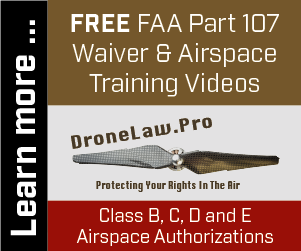

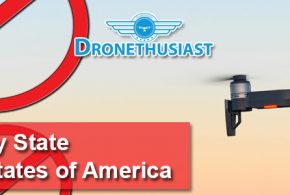
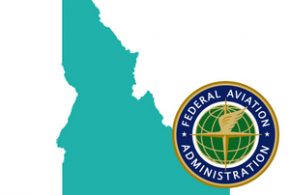
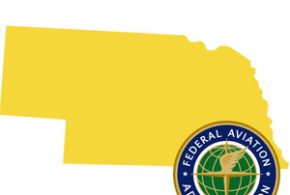
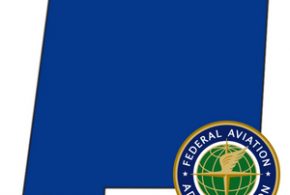

Question: Somebody near me frequently flies a drone with camera over my residence, often coming below the height of my roof (2story house). I flicked them off from my living room and the drone got close enough I could SEE the camera zooming in and out as it adjusted. What can I do?! I don’t know who is flying it or I’d attempt to reason with them.
Wow, Typically drone’s have very small camera’s and a digital zoom of x2. You wouldn’t see it zoom in or out no matter how close it is to you and with only a zoom rate of x2, (x2 is about the same as a smart phone camera if not less.) it looks pretty bad and pixelated at full zoom. The only one’s that can do what you’re describing is a Law Enforcement drone or a Movie drone for making movies that cost around $12,000.00 plus. You must have a very rich peeping-tom in your neighborhood or the law is trying to bust you.